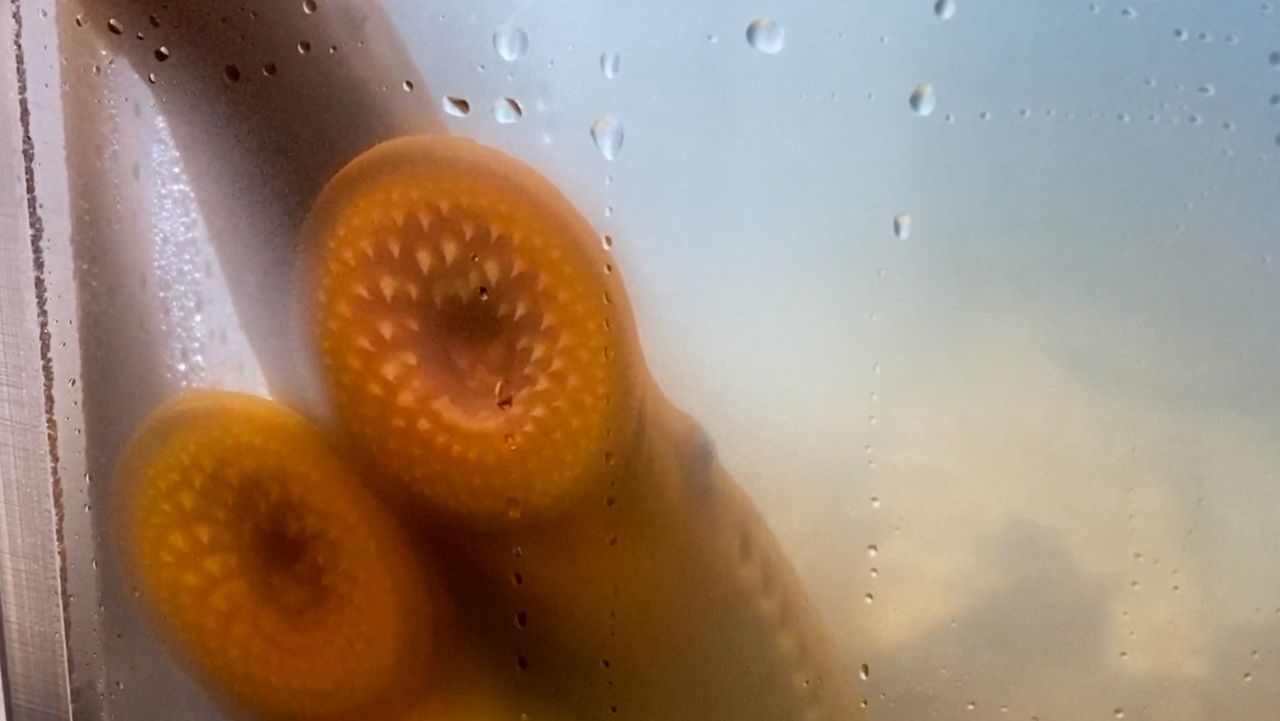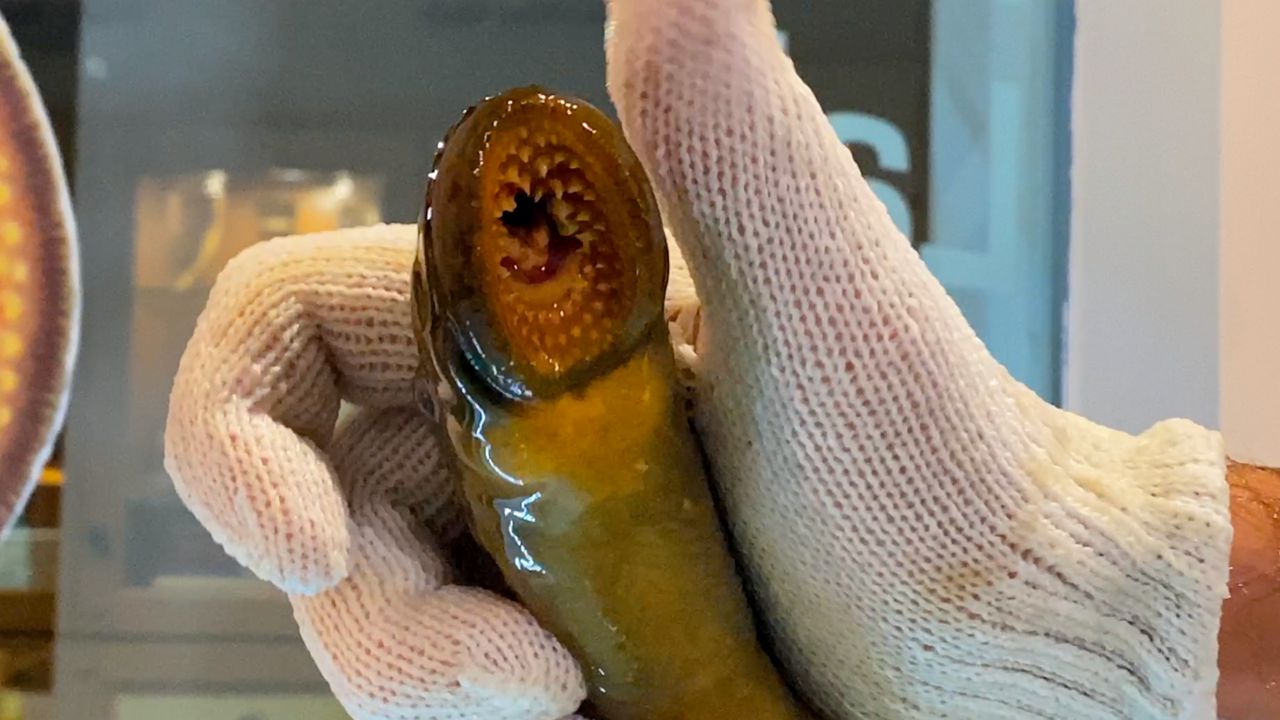MANITOWOC, Wis. — Sounding like a low-budget 1970s sci-fi movie, “Attack of the Sea Lampreys” is an exhibit at the Wisconsin Maritime Museum in Manitowoc. It connects guests to the destructive invasive species that once wreaked havoc on the Great Lakes.
The water inside the lamprey tank is frigid, around 38 degrees. Deputy Director and Chief Curator Kevin Cullen wiped the condensation off the outside with a squeegee and revealed an ancient sea creature.
“Good morning, lampreys. How are ya?” asked Cullen.

The 19 sea lampreys arrived at the Maritime Museum in May as part of their invasive species lab. Around them, Cullen and staff put together an informative and interactive display for guests.
“The center stage belongs to the sea lamprey, the vampires of the deep,” said Cullen.
Cullen trained to handle the sea lampreys and even gave them a ride to the museum in his own car. Besides having an aerator onboard, he was sure to keep the lid tight.
“It’s only a face that a mother could love,” joked Cullen.
A parasitic fish, sea lamprey began moving up the Great Lakes from the Atlantic Ocean 200 years ago when canals opened.
“They came in and out of the Atlantic coast and then made their way into the upper Great Lakes. It’s been about 100 years since they were identified in Lake Michigan. There was a huge collapse of the Great Lakes fishery within that first few decades when they arrived,” explained Cullen.

In their 12-to-18-month lifecycle, one lamprey could kill 40 pounds of fish. At the right angle, the slender, slippery, snake-shaped fish can look innocent enough with its calm blue eyes. But once you see its large, circular mouth with rows of teeth opened up, opinions can change.
“You can actually feel it there,” said Cullen as he brushed the lamprey’s mouth with a gloved hand. “They’re going to want to attach.”
In the water, sea lamprey look to attach their suction-like mouths to cold-blooded animals, where they extract blood and body fluids from fish.
Although they rarely bite humans, the Erickson family visiting from Appleton decided to keep their distance when Cullen gave them a rare, up-close look. He grabbed one out of the tank and approached the three children, who seemed uneasy.
“I thought it was going to grab onto his arm,” said Ethan Erickson.
Mother Kelly Erickson appreciated the interactive learning area filled with facts for her children.
“I think it’s really awesome. It’s neat for them to see something here visually that they can get their hands on,” said Kelly Erickson.

Cullen wears gloves when handling the lamprey, not for protection, but because they are strong and slippery.
“They’re elusive. They don’t have any scales, and they don’t have any bones,” said Cullen.
Female lamprey can lay 100,000 eggs. The invasive fish quickly grew out of control in the Great Lakes, destroying populations like whitefish, trout and sturgeon.
The Great Lakes Fishery Commission now coordinates ongoing lamprey control efforts, which include trapping and a chemical that attacks lamprey larvae.
Eradication efforts have been generally successful, and fish populations rebounded.
“Ninety percent are being managed or eradicated that would be otherwise in the Great Lakes watershed. We’re trying to pay attention to that and also teach the public about what these guys are and how ultimately, we can respond as good stewards of the Great Lakes,” said Cullen.
The alien-looking creatures almost destroyed the Great Lakes fishery, but instead became an invasive species management success story and stars of the show at the museum.



